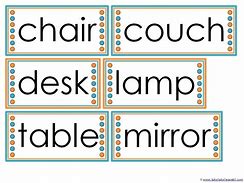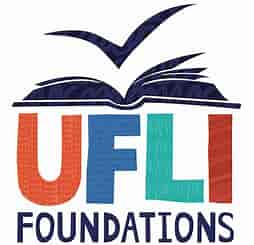
This page will tell you how to teach your child to decode or read. Decoding is “reading the words.” A child must still learn comprehension strategies.
“HELP! How do I teach my child to read?”
Do NOT panic! Kids DO catch up and often surpass the others in their class! Reading is developmental – just like walking. Even if you discover your child has a reading disability, that just means your child needs to learn to read in a multisensory way. They, TOO, catch up and go on to college!
Is your child READY to learn to read?
First, your child MUST have phonological and phonemic awareness to read. Here is a handy sheet. These activities involve the ears ONLY. No print should be in front of the child. The most important phonemic awareness activities are segmenting and blending because these have direct applications to spelling and reading. You can locate these on the sheet, but you can do these with ANY word!
Segmenting – Segmenting translates to spelling! The parent says the word, and the child says the individual sounds in the word.
- “cat” – child says /c/ /a/ /t/
- “plant” – child says /p/ /l/ /a/ /n/ /t/ *Be sure your child does not say /pl/ /a/ /n/ /t/ because /p/ and /l/ are 2 separate sounds. Blends are tricky for children.
Blending – Blending translates to reading! The opposite of segmenting. The parent says the individual sounds in the word, and the child blends sounds into a word:
- /d/ /o/ /g/ child says “dog”
- /b/ /l/ /o/ /ck/ child says “block,” but blends are tricky for children. These will take practice, as children typically omit part of the blend and will say “lock” or “bock.”
Second, your child must know the letter names and sounds.
If your child has phonological and phonemic awareness and letter names and sounds, they are ready to read!
xxxxxx
My Recommendations for Parents!
1. Follow the UFLI decodable curriculum – Lessons 1-128. Do a lesson a day!
This FREE program fills in all the gaps. It starts by teaching one letter—/a/—and adding a new letter daily. By lesson 128, your child can read and write anything. Start today; do not rush through it; keep working on this through the summer!
Click here.
2. Say it, stretch it, spell it, change it
This activity is critical for reading and spelling. It reinforces tapping and blending, and children see the subtle differences in words. In this activity, the students change one letter at a time to create a new word.
Click here.

3. Immerse the child in print via closed captioning and labels around the home
Finland uses closed captioning to support reading development, and they have the world’s top reading scores. Turn the CC on if your child listens to a book being read aloud online! Also, label your home to help with literacy development—bed, toilet, sink, closet, Legos… Your child’s brain needs to process print as much as possible!

xxxxxx
4. Master sight words
Master a few sight words each day. (If you follow step 1 above, the sight words are embedded in the UFLI stories, so you can skip this step.) Sight words are best learned in context with repeated reading, so put sight words in simple sentences for your child to read and reread daily, OR here are great sight word stories your child can learn to read!
Have your child reread these daily!
Preprimer story by Susan M. Serena
Primer story by Susan M. Serena
Grade 1 story by Susan M. Serena
Grade 2 story by Susan M. Serena
Grade 3 story by Susan M. Serena
Follow this link to a story that contains all the Dolch Words! Students’ word recognition, fluency, and comprehension improve significantly when repeated reading of text or phrases is practiced regularly.
If stuck on a sight word, your child should attempt to sound it out. Even though many sight words have irregular spellings, parts of most sight words are regular. Teach your child to memorize the “irregular” part. For example, the “ai” in said makes the short e sound.
xxxxxx
5. Lexia Core 5
If you want an independent computer option that reinforces reading (decoding and comprehension), spelling, and phonemic awareness and TEACHES the EXACT skills your child needs from preschool through grade 5, I recommend Lexia Core 5! Lexia Core 5 is an evidence-based, well-respected app used in many schools. It is available as a home version and costs $175 for a one-year subscription. My school uses it, and I highly recommend it! It should be used at least 60 minutes a week. When you join, your child takes an online test and gets placed at his/her EXACT level. Your child CANNOT advance until he has mastered the necessary sequential skills. Do NOT give your child answers on Lexia Core 5. Lexia Core 5 TEACHES your child!
xxxxxx
6. Parents, make books a fun and engaging experience!
Find books and children’s magazines on topics or characters your child LOVES, and read those together every day. Star Wars, Barbie, Pokémon, Captain Underpants… it is ALL good! It is FINE to read aloud to your child. Make books and print a HAPPY and PLEASANT experience so they associate reading with ENJOYMENT!
xxxxxx
7. Maybe invest in a tutor
That may be best if you can afford a reading tutor because a parent teaching a struggling reader can be a significant battle. Most children are more receptive to someone outside the home. An in-person tutor is best, and find someone trained in Wilson or Orton-Gillingham. This way, you get the phonics, reading, and spelling all rolled into one. These programs are multisensory and systematic, and follow something similar to UFLI in recommendation #1 above. This is what struggling readers need! However, Wilson and OG tutors can be more expensive than the average tutor. If you find a regular reading tutor, have her follow my recommendations on this page! I answer all questions for free – have the tutor contact me!
xxxxxx
8. ONLY use decodable texts!
Parents, if your child is struggling or just learning to read, you must teach them to sound out words and use decodable texts. PLEASE do NOT teach your child to read by using predictable books. Predictable books are level books that go something like this: I like to dance. I like to climb. I like to hike. . . Children aren’t “reading” but guessing based on the pictures. Don’t encourage guessing! Words like dance, climb, and hike have advanced spelling patterns that young children haven’t been taught yet. Stick to decodable texts so your child can be introduced to phonics systematically and SOUND out words. DECODING the LETTERS is READING!
A faulty method of teaching reading is comprehension first, which involves having the child use context clues to read. However, the science of reading has taught us that children need phonics first—to look at the letters in words! When children are stuck, they need to sound it out!
Donations help support this unsponsored website’s publication and maintenance fees. Thank you for your support!
No donations from my school, please! I am here to help you! 🙂
Edited on 03/13/2024
![]()


